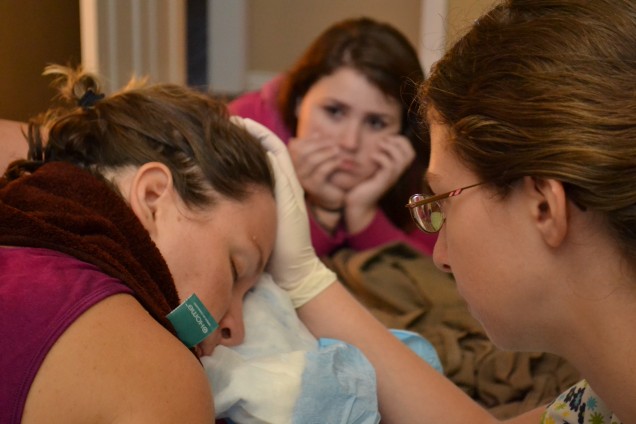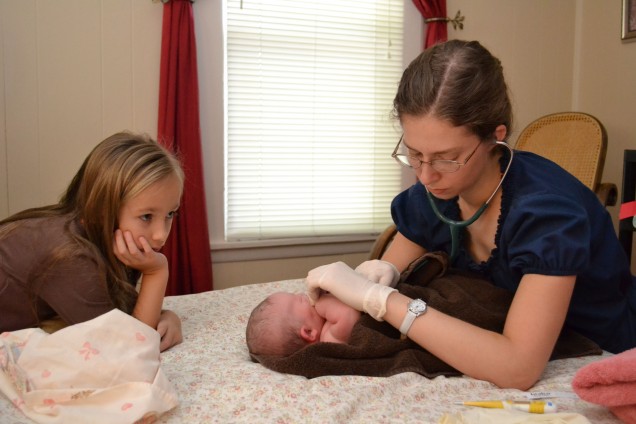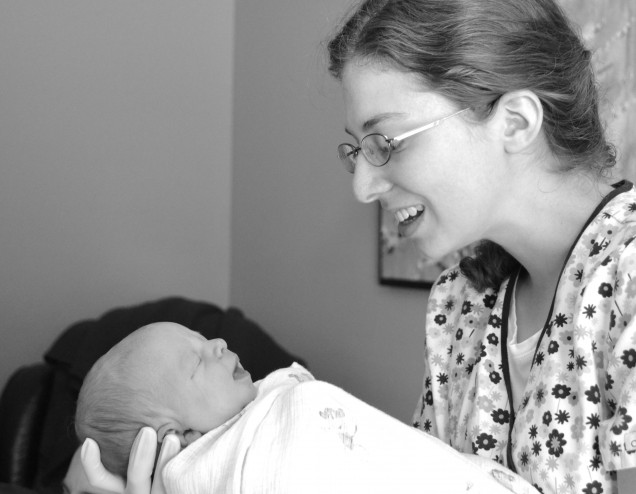When I first announced to my family that I wanted to have my baby delivered by a midwife in the hospital, I was met with serious disapproval from all sides.
“You mean there isn’t going to be a doctor there?” my father-in-law asked, aghast. And my husband, sensitive ’90s type though he is, feared that I was putting myself and our baby in peril for the sake of some feminist ideal. But to me, a hospital birth with a certified nurse-midwife (CNM) — a registered nurse with a master’s degree or certificate in midwifery, the art of delivering babies — was a way to get the best of both worlds: modern technology and natural medicine. I would experience a midwife’s supportive care in a comfortable birthing room, just a few feet away from the emergency medical equipment I hoped wouldn’t be needed.
As it turned out, I had a difficult labor, but my midwife was there for me every step of the way. She encouraged me to experiment with different positions. She told me to hang in there when it became apparent that I was dilating slowly. And after several hours of painful contractions that didn’t spur any progress in labor, she supported my decision to opt for Pitocin and an epidural. True, a labor-and-delivery nurse might have done the same things, but because this midwife had been my primary caregiver for months of prenatal appointments and had helped me develop my birth plan, I felt comfortable taking her advice.
I wasn’t alone in wanting both state-of-the-art technology, should I need it, and a midwife’s gentle touch. After decades in the cultural doghouse, midwifery has shed its image as something antiquated and risky — for back-to-nature types only — and is now at the forefront of obstetrics. Today hundreds of thousands of mothers-to-be, wary of the medicalization and regimentation of traditional hospital deliveries, are turning to nurse-midwives, who treat pregnancy and birth as a natural process that shouldn’t call for much medical intervention.
According to the American College of Nurse-Midwives in Washington, DC, CNMs presided over more than 270,000 births in 1997 — the vast majority in hospitals — up from fewer than 20,000 in 1975. And birth centers, where midwives have traditionally provided care for low-income women, are now popular across the economic spectrum. (Many birth centers cannot administer epidurals, so they may not be the right choice for everyone.)
Not only are midwives turning up all over, they’ve also been radically professionalized since the beginning of the natural-birth movement in the ’70s. In those days, most practitioners were lay or “direct-entry” midwives, who learned the trade through non-degree-granting programs and apprenticeships and who performed mainly home births. Today, direct-entry midwives are outnumbered by CNMs, who’ve been trained to handle everything from ultrasounds and episiotomies to pain relief and Pitocin.
But is the move to incorporate midwifery into the medical mainstream good news for women and their babies? You bet. According to the latest research, women with low-risk pregnancies whose deliveries are supervised by CNMs undergo fewer inductions, receive fewer episiotomies, require less anesthesia, have more vaginal births after cesareans, heal more quickly and are more satisfied with their experience than those who give birth under a doctor’s care. Perhaps the most striking contrast is the c-section rate itself: Studies show that about 13 percent of women who were attended by a nurse-midwife during labor ended up with a c-section. The national average, by comparison, is 21 percent. Of course, midwives generally work with women whose pregnancies are considered free from major problems, which accounts for some of the difference.
Nevertheless, the evidence of the benefits of midwife care is so compelling that more and more obstetricians are being won over. “There’s no question that women who deliver with nurse-midwives do just as well as those who use doctors, as long as physicians are available to handle emergencies,” says Kenneth Bell, M.D., medical director at Kaiser Permanente in Anaheim, CA. “And in some ways — as in the c-section rate — they’re definitely doing better.”
So what, exactly, do these pregnancy practitioners do, and how can you determine whether using one is the right choice for you?







Recent Comments